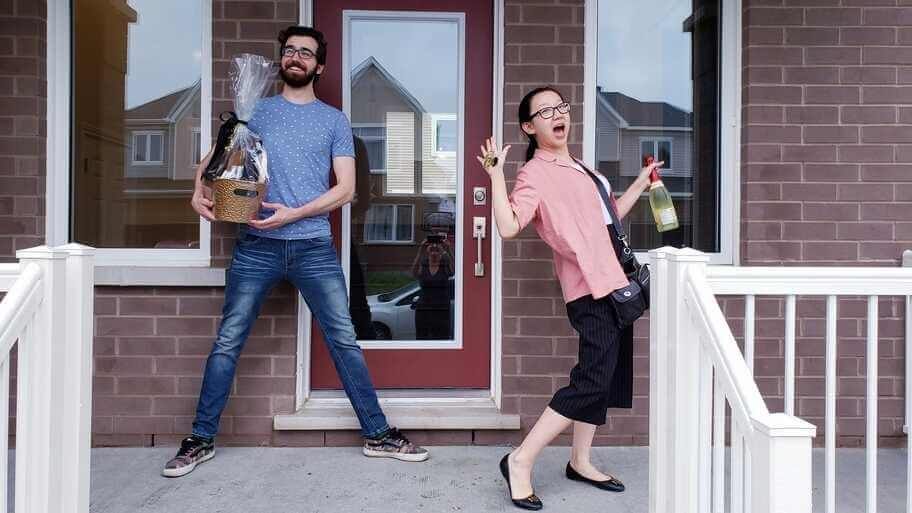It’s extremely costly for most people to rebuild their homes or replace their possessions after a disaster. Your home is a significant investment that needs to be secured.
A home insurance policy is the best way to protect your home and belongings from any unforeseen damages. With this insurance policy, you have peace of mind knowing that your home and possessions are safe no matter what happens.
Even if you are renting, you can choose to apply for home insurance. Although most landlords do not require tenants to have home insurance, it can be a smart decision to get this kind of coverage. This article provides an in-depth overview of home insurance, including what it does and does not cover.
What Is Homeowners Insurance?
Home insurance is also referred to as homeowner’s insurance. Although some people may view it as a luxury, it’s a necessity if you own a home. It protects your home and possessions from theft and damage by covering the costs of home repairs or replacements in case of specified types of damage.
Is Home Insurance Required?
No state requires homeowners to have home insurance. However, if you want to secure a mortgage, your lender will require you to take out home insurance. They need you to ensure the property protecting the investment.
Even if you don’t have a mortgage, it’s a wise idea to have home insurance for your property because it makes it easier for you to rebuild and restock your property in case of a disaster. Otherwise, you could end up in a vulnerable position if you don’t have the funds for repairs.
What Does Home Insurance Cover?
An ordinary home insurance policy ensures your property and belongings in the event of a disaster such as a fire or other losses such as theft. Some types of home insurance policies provide liability coverage in case there is an injury on your property or caused by your pets. The home insurance policy may also cover additional living expenses (ALE) if you have to stay away from your property because of the damage.
Renter’s insurance is another type of coverage that is related to homeowner’s insurance. This policy offer property and liability protection to tenants renting the property.
When purchasing any home insurance policy, it’s essential to know what it covers. Speak to the insurance agent and gather adequate information on the type of policy.
Types of Home Insurance Policies
There are eight primary types of homeowner’s insurance. Each one is designed for different coverage needs and property types. Most homeowners prefer the HO-3 policy. Here are the best homeowners’ policies:
HO-1: This is the most basic type of home insurance designed for a single-family home. It is very limited as it only covers damage to your dwelling, or the physical structure of your home.
HO-2: This policy is also standard for single homes. It’s a minor upgrade from the HO-1 as it covers your personal property in addition to your dwelling, However, coverage only applies for a limited range of damages specified in the policy.
HO-3: This is the most common type of homeowner’s insurance policy. It comes with broader coverage including liability coverage and additional living expenses.
HO-4: This is renters insurance. Though your landlord likely has homeowners insurance to cover the property, this provides you with personal property and liability coverage.
HO-5: This is the most common homeowner’s insurance policy for single-family homes and ranks second in overall popularity after HO-3 policies. It protects your home and property from perils other than the ones identified as exclusions in your policy.
HO-6: This is condo insurance. It complements your condo association’s policy by covering your personal belongings, liability, and other assets depending on the policy.
HO- 7: This policy is specifically for manufactured or mobile homes. It protects your property against any peril not named as an exception.
HO-8: This homeowner’s insurance policy is for older homes. It tends to pay the market value of your home, which may not cover all of the actual cost of rebuilding or repairs. There are also coverage exclusions such as for damages caused by earthquakes or flooding.
Homeowner’s Insurance: HO-5 vs. HO-3
The main difference between these two common types of homeowner’s insurance policies is that the HO-5 policy is more comprehensive. The HO-3 policy only covers your home’s cash value, while the HO-5 covers both your assets’ cash value and the replacement cost.
Replacement Cost vs. Actual Cash Value
Policies that cover replacement costs will reimburse you for the cost of buying new items. On the other hand, cash value policies only reimburse you for the actual value of the items that you lost in the condition that they were in. For example, if you need to replace your 10-year-old fridge, replacement cost policies will cover the cost of a new fridge, while actual value policies will reimburse you for the cost of a 10-year-old fridge.
Ultimately, an actual cash value policy may not pay out enough to cover all of the costs of rebuilding a new home or purchasing new replacement items.
What Is Not Covered by Homeowner’s Insurance?
Standard home insurance covers most scenarios where damage to your property or belongings occurs. However, there are many things that home insurance doesn’t cover. The insurer will not pay for damages caused by poor home maintenance. Home insurance is for unexpected events that are out of your control, not preventable damage or wear and tear.
Home insurance also excludes some perils such as natural disasters or acts of war. If you live in an area prone to hurricanes, floods, and earthquakes, it’s vital to get a different policy or upgrade your coverage to include such disasters.
How Much Home Insurance Do You Need?
The type of home insurance required for your property depends on your situation. For example, if your home is quite expensive or you have precious personal belongings, you may need more extensive coverage. You may also want to go for a higher level of personal liability coverage if you host guests often or have a trampoline or pool.
You should consult with an insurance agent or financial advisor to discuss the best options for your particular needs.
Homeowner’s Insurance Deductibles
Each type of homeowner’s insurance comes with an insurance deductible. This is the amount you need to pay before an insurer will pay out your claim. Typically, your deductible is a percentage of your home’s insured value and comes out to a flat dollar amount like $800 or $2200.
When you get a claim check, the insurer will subtract the deducible amount. For example, if you have a $2000 deductible and the insurer approves $20,000 in repairs, the insurer will pay you $18,000. A higher deducible amount lowers your premium, but you incur a greater financial burden when making a claim.
How Much Does Homeowner’s Insurance Cost?
The cost of your homeowner’s insurance depends on the type and amount of coverage you choose. It also depends on many other factors, including the age of your home, your state, the distance to the nearest fire station, how the house is constructed, cover option levels, your deductible, your claim history, and your credit score.
When choosing a homeowner’s insurance policy for your property, your agent will help you choose the best policy for your needs and will inform you if you qualify for any policy discounts. In the U.S, the average cost of homeowner’s insurance ranges from $1,312 to $250,000 per year.
Frequently Asked Questions
What Is the Difference Between Homeowner’s and Dwelling Insurance?
Typically, homeowner’s policies are more comprehensive than dwelling policies. Homeowner’s policies generally cover your property as well as your personal belongings, liability, and other coverage depending on your policy. On the other hand, dwelling policies only cover the physical structure of the building. These policies are mainly applied to vacant or owner-occupied rental properties.
What Is a Homeowner’s Insurance Endorsement?
A homeowner’s endorsement is extra coverage that you can add to your policy. It covers losses that are not covered under your standard HO-3 policy. For example, most insurers offer an endorsement policy referred to as “water backup coverage” that provides coverage for plumping backup that may flood your home or bathroom floor. Other common homeowner’s insurance endorsements include service line coverage, equipment breakdown coverage, and extended replacement cost.
Is Homeowner’s Insurance a Ripoff?
The expense of dealing with unexpected disasters makes home insurance a worthy investment. However, you may also face coverage exclusions, denial of a claim, or increased premiums.
The best option is to do your research and consult an insurance agent to find the insurance policy that provides the best value to you. You should not gamble with your home and finances by going without a home insurance policy.
Featured Image: Twenty20








